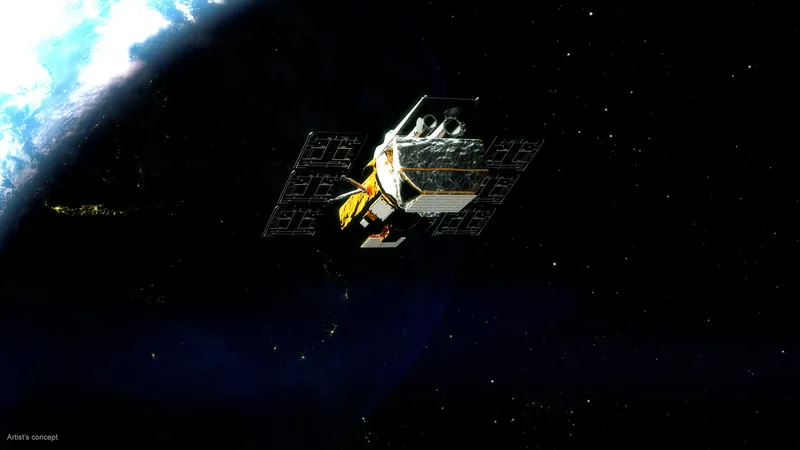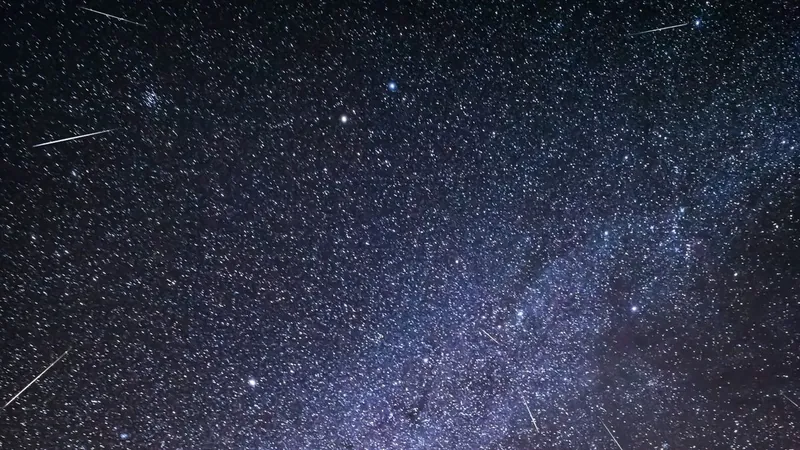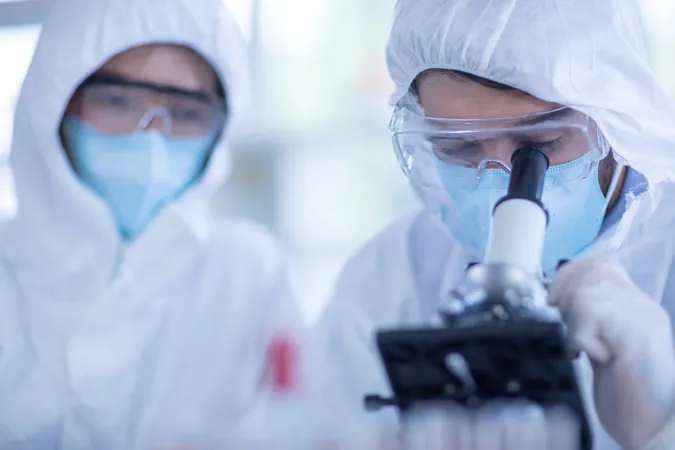
NASA's Swift Celebrates 20 Years of Cosmic Discoveries with Enhanced Performance
2024-11-20
Author: Charlotte
After two decades soaring through the cosmos, NASA's Neil Gehrels Swift Observatory is reaching new heights thanks to a groundbreaking operational strategy implemented earlier this year. This innovative approach is enabling Swift to perform even better in its quest to unveil the secrets of gamma-ray bursts—one of the universe's most powerful and enigmatic phenomena.
A Pivotal Meeting
The inception of the Swift mission traces back to a pivotal meeting in a hotel basement during a 1997 conference in Estes Park, Colorado. "A group of astrophysicists gathered to tackle the mystery of gamma-ray bursts, which were still largely unexplained at the time," recounted John Nousek, the Swift mission director at Pennsylvania State University. This collaborative spirit led to the creation of a satellite capable of swiftly locating these bursts, which occur unexpectedly in the vast expanse of the universe—approximately one per day.
Understanding Gamma-ray Bursts
Gamma-ray bursts are categorized into long and short types. Long bursts, marked by a gamma-ray pulse lasting two seconds or more, result from the catastrophic collapse of massive star cores into black holes. Conversely, short bursts, which last less than two seconds, are birthed through the collision of dense celestial bodies like neutron stars.
Launch and Impact
When Swift launched on November 20, 2004, from Cape Canaveral Space Force Station in Florida, it aimed at revolutionizing how astronomers study these cosmic explosions. The mission was initially dubbed the Swift Observatory for its agile tracking capabilities but was renamed in 2018 to honor its first principal investigator, Neil Gehrels.
Operational Challenges and Solutions
The observatory employs sophisticated methods for orientation and stabilization to analyze gamma-ray bursts effectively. Sensors monitor the sun's position and Earth's magnetic field, while a star tracker ensures that Swift maintains precise targeting during long observational sessions. However, an early challenge arose with the alignment of the spacecraft's three gyroscopes, prompting an ingenious strategy where one gyro would compensate for any misalignment, while the other two maintained Swift’s accurate pointing.
In anticipation of potential gyro malfunctions, the team devised a backup plan in 2009 to operate Swift with just two gyros. However, the implementation of this plan was postponed for 15 years due to the risks associated with operational changes in space. The unexpected malfunction of one gyro in July 2023 pressured the team to act swiftly, enabling them to utilize their pre-planned two-gyro operation with remarkable efficiency.
Looking Ahead
Mark Hilliard, the flight operations team lead at Omitron, Inc. and Penn State, stated, "Thanks to our preparations, we successfully transitioned to the new method, and scientists have observed an improvement in Swift’s pointing accuracy—better than at launch, which is tremendously encouraging."
Over the past two decades, Swift has yielded groundbreaking discoveries not only in gamma-ray bursts but also in the study of black holes, stellar phenomena, comets, and beyond. As S. Bradley Cenko, Swift's principal investigator at NASA's Goddard Space Flight Center, aptly put it, "Swift continues to play a pivotal role in NASA's fleet, helping to usher in a new era of multimessenger astronomy, which provides us with a more comprehensive understanding of the universe."
As Swift embarks on its next chapter, it remains a vital asset in NASA's mission to detect fleeting and unpredictable cosmic events, paving the way for future astronomical insights that could reshape our understanding of the universe. Buckle up—there’s so much more left for Swift to reveal!









 Brasil (PT)
Brasil (PT)
 Canada (EN)
Canada (EN)
 Chile (ES)
Chile (ES)
 España (ES)
España (ES)
 France (FR)
France (FR)
 Hong Kong (EN)
Hong Kong (EN)
 Italia (IT)
Italia (IT)
 日本 (JA)
日本 (JA)
 Magyarország (HU)
Magyarország (HU)
 Norge (NO)
Norge (NO)
 Polska (PL)
Polska (PL)
 Schweiz (DE)
Schweiz (DE)
 Singapore (EN)
Singapore (EN)
 Sverige (SV)
Sverige (SV)
 Suomi (FI)
Suomi (FI)
 Türkiye (TR)
Türkiye (TR)